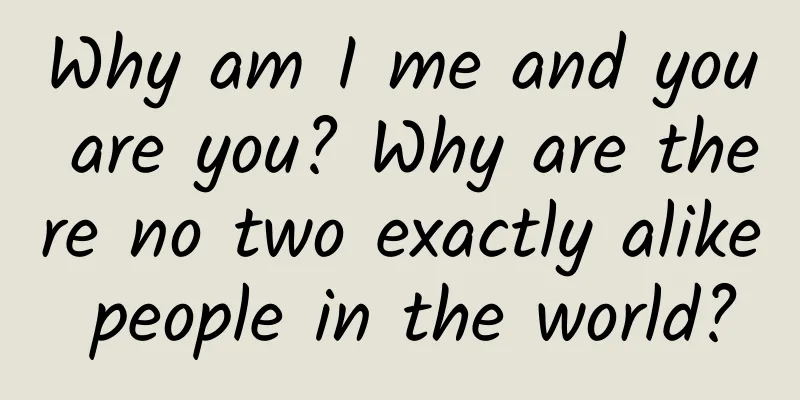Is your iPhone frozen and shut down during the cold snap? Should Apple be blamed for this?

|
Do you know the loneliness you feel when your cell phone suddenly turns off in the cold night? If you are an Apple phone user, have you ever experienced something like this: on the way home in the cold winter, you took out your iPhone to call a taxi, make payments, make phone calls, send WeChat messages, or take photos, but it suddenly shuts down mercilessly. The phone is the warmest thing in the cold winter, but when you need it, the iPhone leaves you alone in the cold wind. This bleak scene happens almost every year, and it's even more severe this year. Within a week, we've received dozens of complaints about iPhones freezing and shutting down, "Shutdown, unable to restart, touch failure, instant power loss, difficulty charging..." The circle of friends is no longer dominated by iPhone 7, but more about the topic of older iPhones not being able to survive the winter. Why do Apple phones worth 5,000 or 6,000 yuan turn into bricks when they encounter a cold snap? This is simply a joke for Redmi phones worth a few hundred yuan. Who should be blamed for Apple's battery freezing and shutting down? Why is the delicate iPhone so afraid of cold? It was found that the users who reported that their iPhones were shut down due to freezing were mainly concentrated in the north. Take Beijing as an example. The outdoor temperature in Beijing last week and this week was basically between 1 degree and 10 degrees, and it has just entered winter. As an iPhone user, I dare not imagine how to take care of this baby, Apple, when the cold wave hits in the next few months. It is understood that the Apple models that are not resistant to freezing are mainly concentrated in the iPhone 5S, 6, and 6S series, which also include the plus series with larger battery capacity. Users who have just changed to iPhone 7 have less feedback in this regard. We called Apple's official customer service and the customer service girl patiently explained to us that many users had called recently to inquire about this issue. This type of problem was mainly caused by low temperatures. The iPhone shuts down and cannot be charged in low temperatures because Apple's battery has a low-temperature protection setting. This is normal, but Apple officials also stated that they can perform free testing on the phone to determine whether there is a problem with the phone battery or the low-temperature protection is caused by weather reasons. When asked whether the freeze-resistance problem would still occur if the iPhone 7 was replaced, the customer service said that they could not guarantee this, but the improvement in iPhone 7 battery performance was due to improvements in software and processors. So what exactly is low temperature protection for the battery? The customer service staff explained that when the iPhone is at a temperature below 0℃, the ion diffusion of the positive and negative electrodes of the battery deteriorates, the discharge capacity weakens, and the system automatically recognizes that the battery is out of power. The phone will then experience a large number of "power jumps" in a short period of time, and even trigger the battery self-protection mechanism to automatically shut down the phone. In other words, the fact that Apple products are sensitive to cold is a problem with the lithium battery, not Apple's problem. A Zhihu netizen gave a vivid explanation. All lithium batteries are afraid of cold, which is mainly related to the electrolyte. Generally, the electrolyte in lithium batteries is divided into liquid electrolyte and gel electrolyte. However, whether it is liquid or gel electrolyte, the resistance will increase at low temperatures, thereby affecting the transfer activity of lithium ions between the positive and negative electrodes. Suppose there is a large river with 100 ships shuttling back and forth. One day, the river surface is iced, and the time for the ships to go back and forth becomes longer, and the overall traffic efficiency is greatly reduced. Here, the ship is the lithium ion, the river is the electrolyte, and the traffic capacity can be understood as capacity. Will Apple’s fear of cold lead to regional discrimination? Although the problem lies with the lithium battery, we still have to ask, if iPhones in North China freeze and shut down, how can Apple users in the three northeastern provinces turn on their phones? Does that mean that Canada, Northern Europe, and the fighting nation of Russia no longer use Apple? I also consulted some users in Northeast China and students studying in Northern Europe. Their answer was, use it as you like! Just try to reduce outdoor operations. After all, when the temperature is more than 20 or 30 degrees below zero, you can't stretch your hands outdoors, let alone play with your phone. Apple's requirements for the operating environment of its electronic products are: the optimal operating environment for iPhone, iPad, iPod and Apple Watch is 0℃-35℃, and the optimal operating environment for MacBook is 10℃-35℃. Regarding the regional issue, an interesting assumption was also made. As we all know, Apple's headquarters is located in Silicon Valley, California, which is located in San Francisco, USA . The climate is warm in winter and cool in summer, with plenty of sunshine and an average annual temperature of 13-24℃. In such a superior environment, Apple engineers may have overlooked the problem of iPhone's acclimatization. Perhaps because Finland is located in an extremely cold country, Nokia did not develop touch-screen mobile phones on a large scale in the past. The mobile phones are resistant to low temperatures and the batteries are durable. Of course, this is just speculation. But in the Chinese market, Apple has indeed had some problems recently, and its brand recognition has plummeted. Among the top 20 smartphones in the Chinese market, Apple only ranked fifth or sixth this year. UBS analysts released a report saying that over time, the loyalty of iPhone users has become lower and lower. In a recent research report to investors, UBS analysts said that although Western users still maintain a high degree of loyalty to the iPhone, the anti-Apple trend in the Chinese market is so prominent that it has lowered the company's customer retention rate worldwide. If iPhones are frozen into bricks in winter, it will indeed affect consumers' acceptance. It is also helpless to have an iPhone but not dare to take it out. Battery technology innovation is a philosophical question Speaking of this, have you ever thought about a question, why Apple has not launched battery fast charging technology yet? Smartphones have developed to the point where they have clearer displays, better software, and cameras comparable to SLRs, but battery technology has not kept pace. How to produce better batteries has long been a concern for the technology industry. Take Samsung Note7 as an example. In order to compete with Apple and meet consumers' demand for batteries with longer battery life and faster charging, Samsung Electronics had to break the limits of lithium-ion technology, but the result was counterproductive. Note7 exploded and Samsung missed the best opportunity to overtake Apple. The headaches of producing lithium-ion batteries are not unique to the smartphone industry. In 2006, overheating problems with batteries manufactured by Sony led Dell, Toshiba and other companies to recall millions of laptops. Although Apple is famous for its technological innovation, it has always been conservative on some issues, battery technology being one of them, which involves a philosophical issue of trade-offs. Lithium-ion batteries are currently unable to take into account both high and low temperature differences during the tuning process. Often, high-temperature performance is good but low-temperature performance is poor, and vice versa. For mobile phones, high-temperature scenarios are obviously more common: chip heating, high-temperature environment, and being left in a car under the sun in summer. High-temperature scenarios are also more likely to cause irreversible performance degradation and safety issues. Users rarely use their phones outdoors in extreme cold weather, so manufacturers will pay more attention to high-temperature performance. Shutting down the phone is hundreds of times better than crashing it. Once Apple's phones start crashing, the brand value accumulated over the years will be reduced to zero. But some people may ask, why are Android phones relatively cold-resistant? "Xiaomi is still hot in winter!" What can be forgiven is that although Apple will automatically shut down the phone in cold outdoor conditions, as long as it returns to a warm environment, the performance will return to normal. This is the iPhone's care for itself. Android phones also use lithium-ion batteries, which are also affected by low temperatures, but their temperature detection standards are different. However, Apple's temperature detection mechanism is more rigorous and cautious. As long as the environment is not suitable, the shutdown mechanism will be triggered. The battery self-protection temperature of Android phones may be set lower, so they are less afraid of cold. In short, as long as you choose Apple, you have to accept its imperfections. It is recommended that Apple users carry a spare phone or power bank with them in winter in case of emergency. As a winner of Toutiao's Qingyun Plan and Baijiahao's Bai+ Plan, the 2019 Baidu Digital Author of the Year, the Baijiahao's Most Popular Author in the Technology Field, the 2019 Sogou Technology and Culture Author, and the 2021 Baijiahao Quarterly Influential Creator, he has won many awards, including the 2013 Sohu Best Industry Media Person, the 2015 China New Media Entrepreneurship Competition Beijing Third Place, the 2015 Guangmang Experience Award, the 2015 China New Media Entrepreneurship Competition Finals Third Place, and the 2018 Baidu Dynamic Annual Powerful Celebrity. |
<<: Hackers vs. smart cars: Count the models that failed
>>: There are many difficulties in each link. What happened to driverless cars?
Recommend
Is the popular “private domain traffic” really that powerful?
Private domain traffic should be one of the hotte...
November "Science" Rumors List | Cold weather means a cold winter? Electric cars have higher carbon emissions than fuel cars?
High? Planting a trillion trees can reverse clima...
What is the relationship between products and operations? Here is the ultimate solution!
I was once asked about the relationship between p...
Share 6 small money-making projects, simple and crude, and can be expanded. After reading this, novices can start to practice immediately
Today I will share with you six ways to make money...
Why does Party A ask Party B to focus on creativity and less on strategy?
Many advertising companies often run into problem...
Half-moons, hangnails... Is there something wrong with your nails? Stretch out your finger and click in to check!
If you don't have half-moons on your nails, y...
Is it possible to start a business with 0 cost? 5 zero-cost side hustle projects! Each one is regular and long-lasting
Is it possible to start a business with 0 cost? S...
How to operate an event well? Master these 5 steps!
If you are a new product person with 1-3 years of...
iPhone 6 launch in China is unlikely this month
The much-anticipated iPhone 6 and iPhone 6 plus w...
The hot clouds dispersed, and the cool breeze rose
Loading long image... Source: National Geographic...
How to plan a hot-selling content promotion that will sweep the screen?
Most content operators expect explosive content ,...
The untold truth in science fiction? The real Wandering Earth actually requires so many nuclear bombs!
Can the Earth leave the solar system? How should ...
Take stock of online marketing and promotion channels! One picture is enough, I collected it~~
Introduction: This article divides the nine commo...
Well-known actor fined 106 million yuan! What is tax evasion? Will you go to jail?
Experts in this article: Mao Junying, tax lawyer ...
Interpretation of APP development postures in 3 major mobile application methods
We all know the current mainstream mobile applica...









